Australia's miracle economy, a quick update on how we're tracking: Pete Wargent
Since we came out of Keating's famous "recession we had to have" and slow growth returned to Australia in September 1991, our economy has posted an amazing 22 consecutive years of growth. Although we experienced a slowdown around the turn of the century as the tech stock bubble burst, and again during the financial crisis, on both occasions interest rates were dropped and monetary policy helped Australia to avoid recession. 
The most recent National Accounts from the Australian Bureau of Statistics showed the Australian economy growing at 0.6% quarter on quarter and 2.6% year on year, which is some way below the long-term trend as you can see in the chart above. The official cash rate has again been dropped, this time to a new low of just 2.50%. The full effect of interest rate cuts can take up to two years to flow through in full.
As inflation remains benign and comfortably within the Reserve Bank's 2-3% target range, it appears likely that interest rates will remain relatively low for the near-term future.
Inflation is forecast to remain fairly benign, largely thanks to a soft labour market.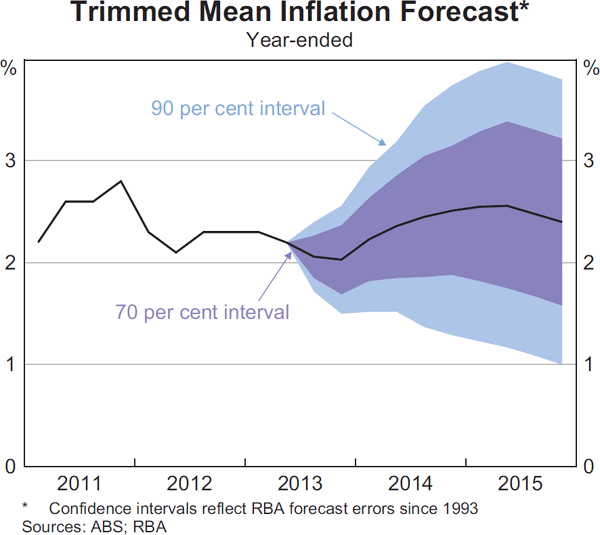
Consequently, there is not yet an expectation of higher interest rates in the coming six months. 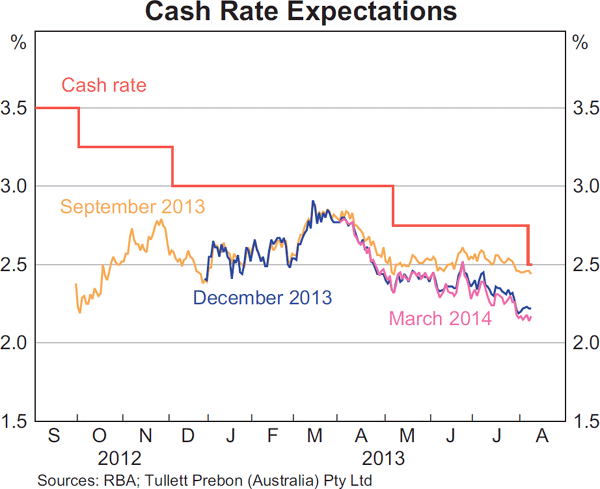
Low interest rates have impacted net savers and some pensioners adversely. Bank accounts and fixed-interest products are yielding very low returns.
Some residential property market prices have benefited from the lower rates, particularly those in Sydney, Perth and Melbourne. There was a lot of market commentary suggesting that the response to low interest rates by the property market would be weak. As recently as June, there was talk of falling prices in spite of multiple indications to the contrary.
This has been shown to be incorrect. The response has in fact been strong and is strengthening by the month, causing a rapid about-face in commentary. If this trend continues as implied by recent housing finance data from the ABS then it may cause a stop lever to be applied in 2014. 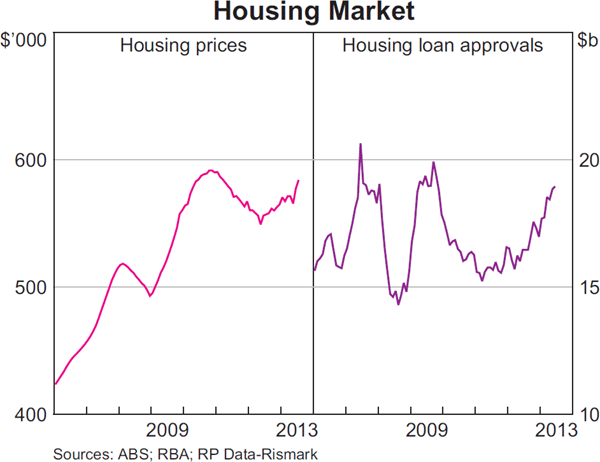
Is the property recovery being led by real estate investors or owner-occupiers? Actually, it's both. 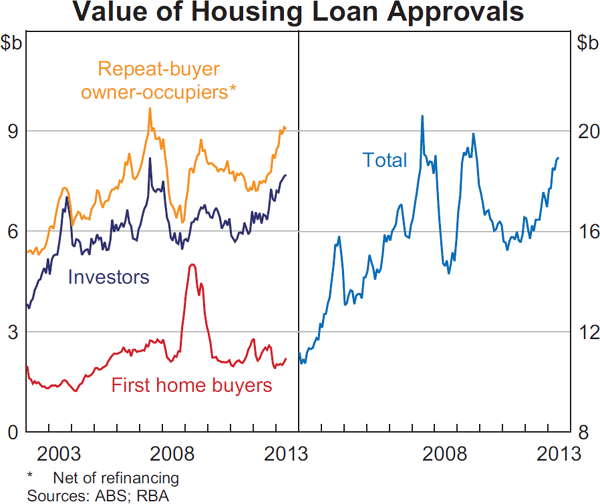
Vacancy rates have remained now for some years, and rents continue to rise.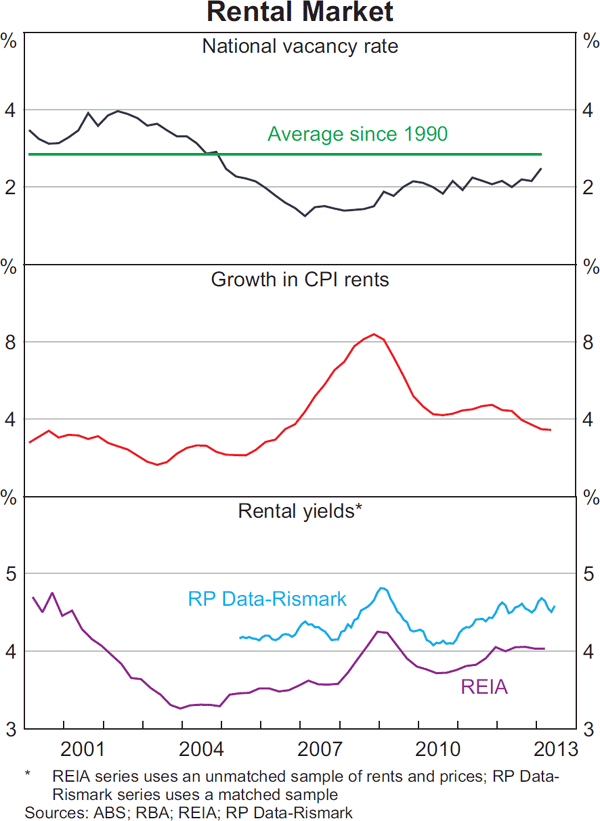
Are new dwellings attracting buyers? Yes, with a steady increase over the last three years.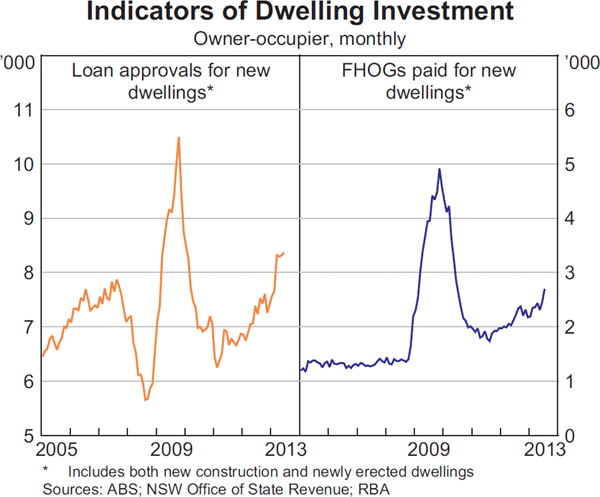
Both dwelling approvals and dwelling construction are trending steadily upwards in response to monetary policy.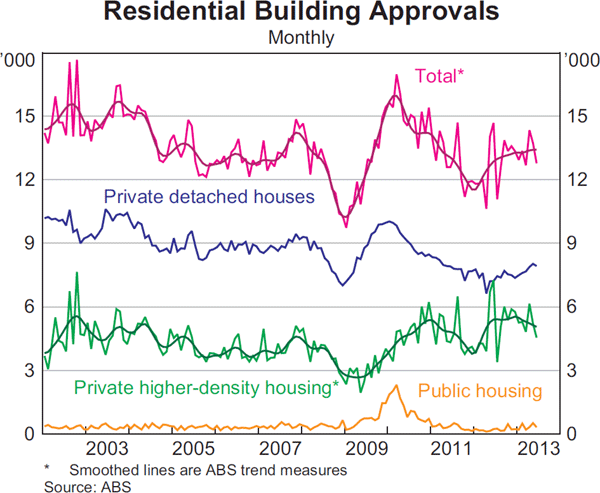
After the stock market crash, investors have also returned to share markets seeking yields and prospects for capital growth, pushing up stock valuations and price-earnings ratios. 
With asset prices increasing, we're getting wealthier again after the financial crisis destroyed much of the value of superannuation funds through 2008-9. 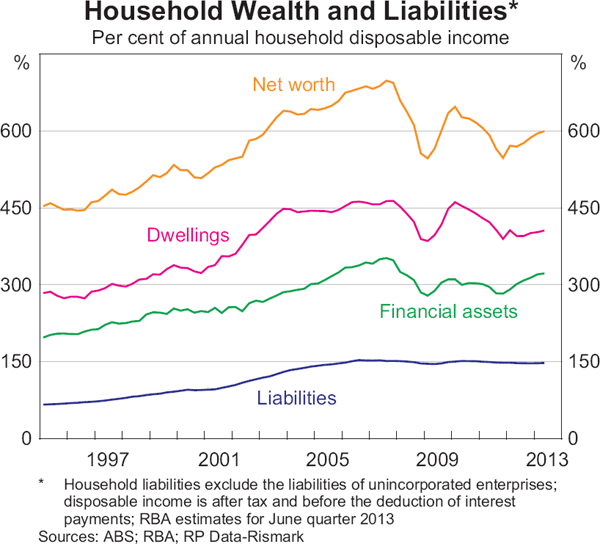
It's notable, however, that share market gains have been found largely in the non-resources sectors: the industrials and financials. Resources companies have performed less favourably as commodity prices have tailed off. 
Iron ore export spot prices have not remained dramatically lower as feared (although it's likely that we'll see a seasonal dip in the coming months), but it's been a rough ride for other bulk commodity prices.
The brighter news is that recent data out of China suggests that it can achieve and perhaps subsequently maintain its growth target of 7.5%.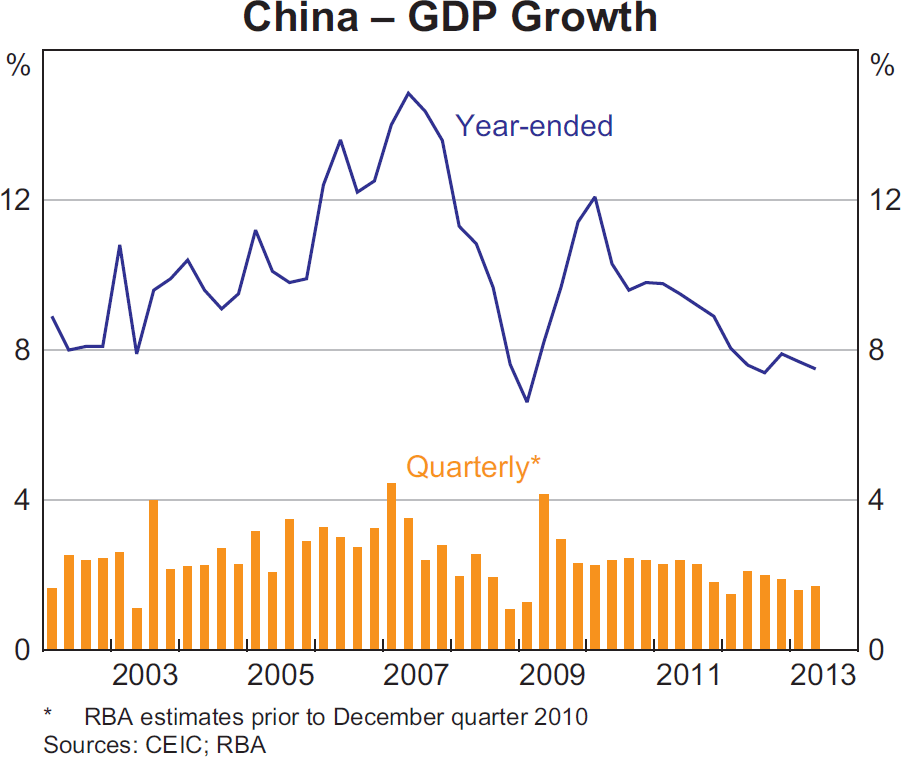
Resources export volumes from Australia continue to ramp up and the major players forecast this to continue through 2014.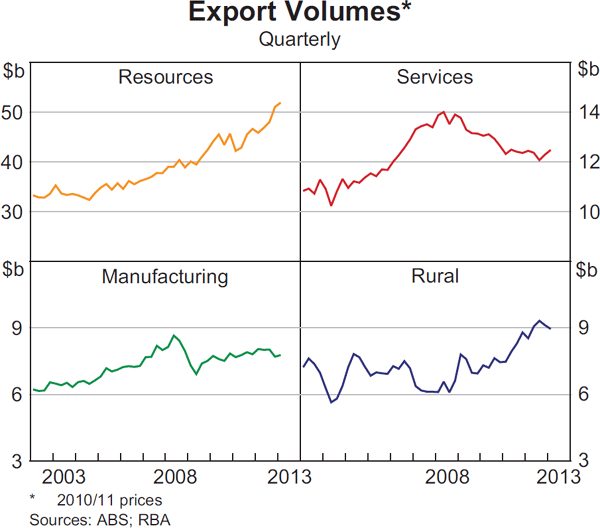
However, from a risk perspective, keep a close eye on what happens to China's overheating property markets. 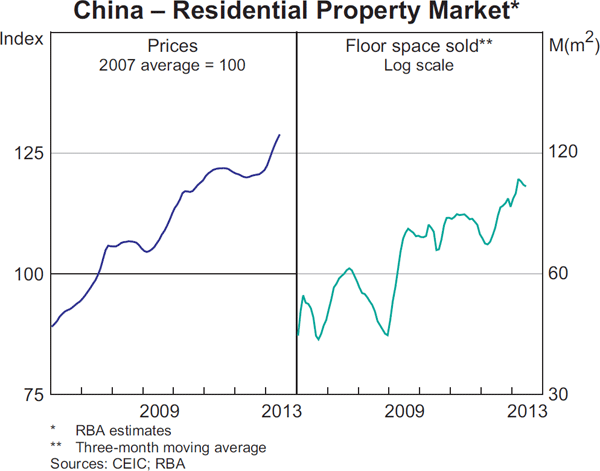
The red line signifies a weakening Aussie dollar against the USD, which is welcome news for exporters.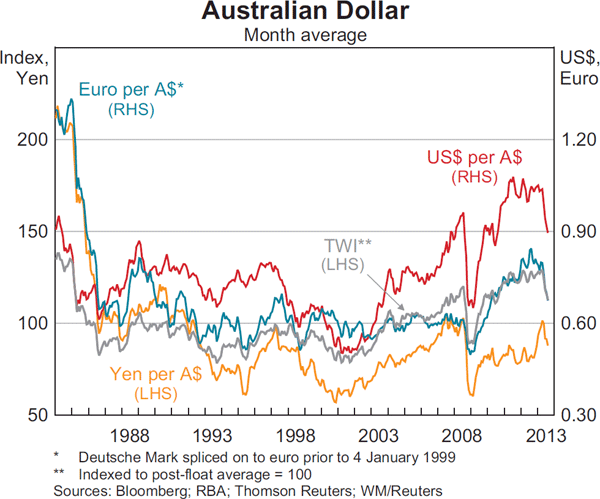
Unemployment continues to increase steadily in Australia as the mining investment boom is set to decline over coming quarters. The participation rate is also sliding.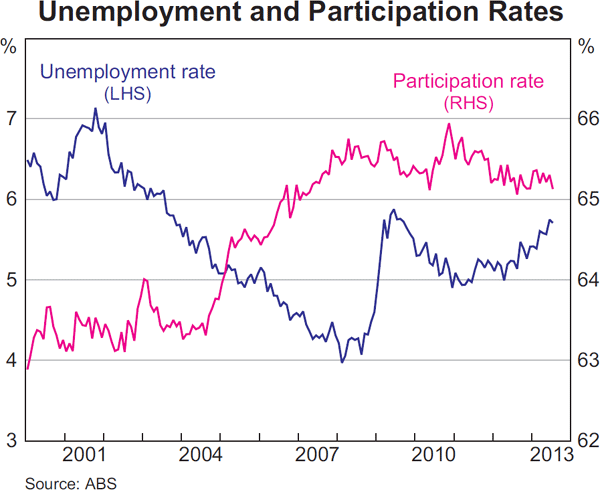
Wages growth has also fallen away.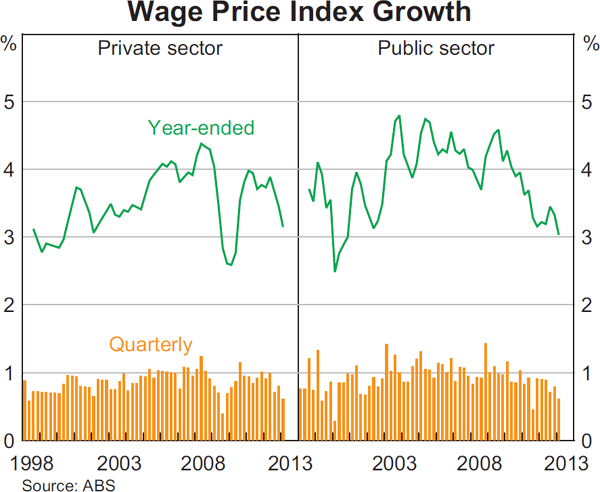
Note below the disparity in employment growth between states as the population booms. The major states are cumulatively employing tens of thousands more heads. Tasmania, South Australia and the territories, however, are not. 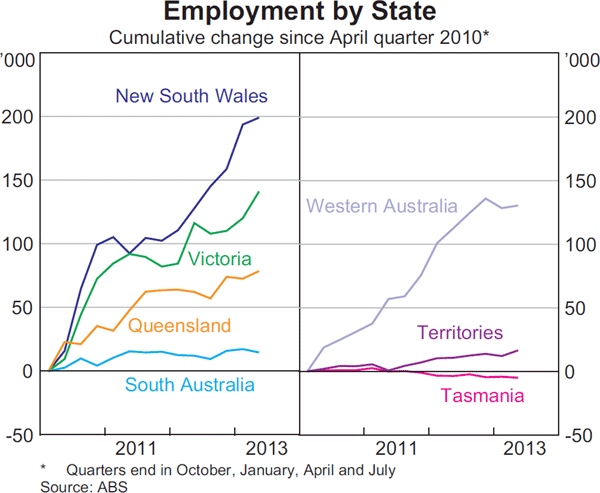
Labour sentiment indicators point to an ongoing weakness.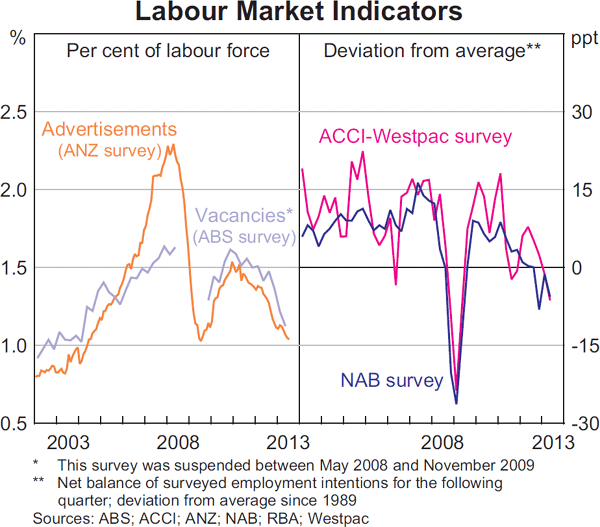
There has been a notable pick-up in consumer sentiment of late, and we're certainly buying a lot of cars, but any such confidence has yet to be translated into stronger retail sales.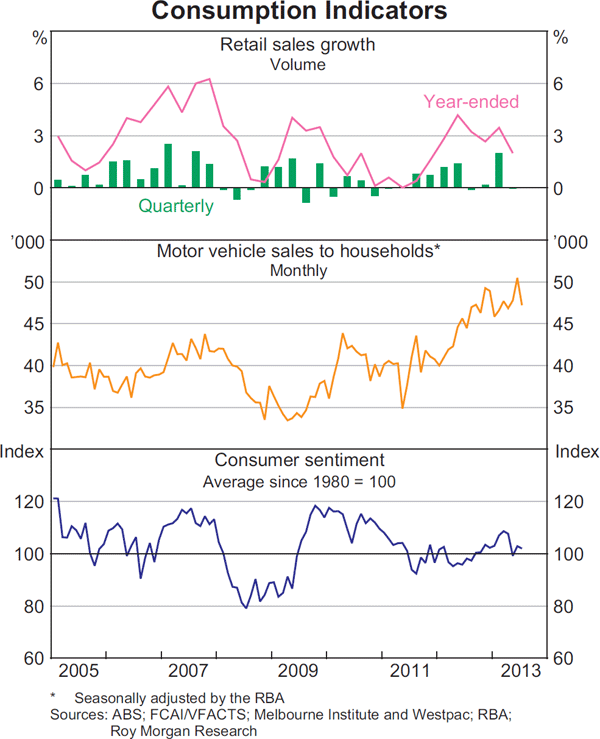
Summary
All in all, the RBA's Statement of Monetary Policy and Economic Outlook shows that the economy has slowed, and with the labour market remaining soft, we can expect this to continue for some time.
There is a significant community of voices which is hoping that the economy sinks into recession, in the misguided hope or belief that will somehow make things better. And indeed the labour market remains weak and the mining construction phase will begin to unwind in the coming years.
Does this mean that Australia is headed for recession? In a word, the RBA's team of economists says: no. The Reserve Bank maintains confidence that stimulatory monetary policy will work and stronger growth will return. 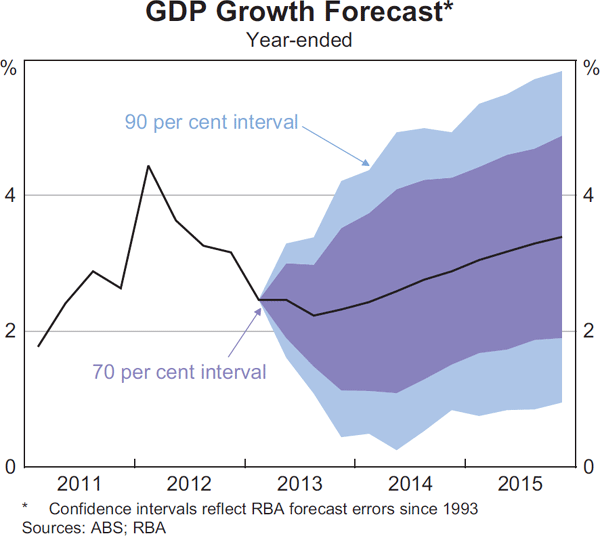
Pete Wargent is the co-founder of AllenWargent property buyers (London, Sydney) and a best-selling author and blogger.
His new book 'Four Green Houses and a Red Hotel' was released on 1 September 2013.